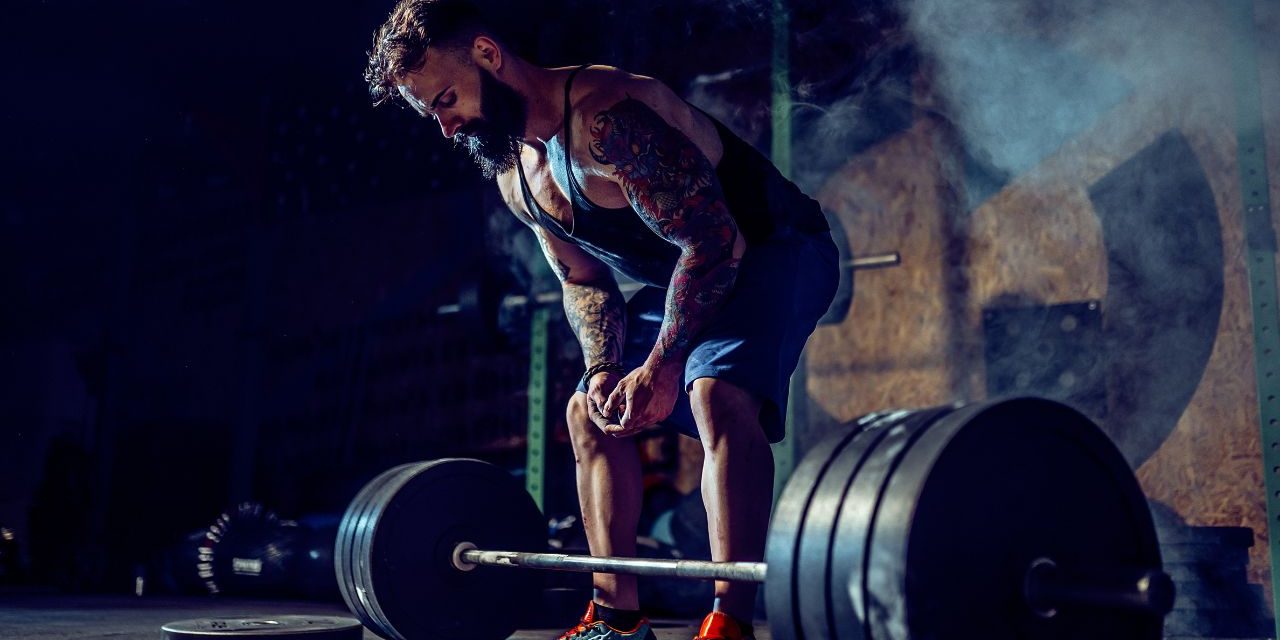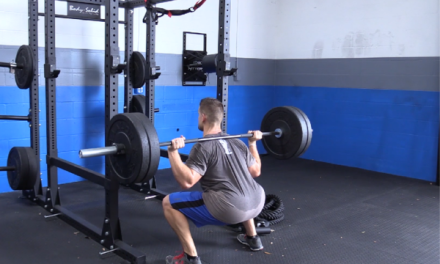Today, our focus will be another great strength exercise: the sumo deadlift.
I like the sumo deadlift quite a bit for those who aren’t quite mobile enough to get all the way down to the bar for conventional deadlifts from the floor.
It’s also grown in popularity among powerlifters over the years because it shortens the distance the bar has to travel and also (as a general rule of thumb) allows lifters to get more out of their deadlift (or squat) suits when pulling.
I find that it’s particularly common among the guys who are built to squat and bench press because of shorter arms and legs but longer torsos because they don’t have to get down so low (via hip flexion and dorsiflexion) to grasp the bar.
By bringing the feet a bit wider (abducting the hips) and turning the toes out a bit (externally rotating the hips), a lot of folks can get to “depth” much easier and ensure that they can pull with a neutral spine.
This is probably one reason why those with more retroverted hips inevitably resort to sumo deadlifts after failing miserably with trying to pull conventional-style; they’re just more comfortable with the hips externally rotated a bit.
So, if you’re someone who always walks with the toes pointed out, there’s a good chance that sumo deadlifts are going to be safer for you than conventional pulling.
That said, when discussing sumo deadlifts, I have just two concerns.

Advantages and Considerations of Sumo Deadlifts
First, I think that they need to be cycled in and out of one’s strength and conditioning program relatively frequently, especially if you use an ultra-wide stance.
Deadlifting sumo-style for more than eight weeks straight is a recipe for hip irritation – especially if you’re someone who is doing a fair amount of squatting in the same strength training programs.
It’s one reason why I prefer a more “moderate” stance width for sumo deadlifts.
Second, the biggest sumo deadlift technique mistake I see is lifters trying to squat the weight up and down.
When the hips start too low – and then the hips and knees extend at the same rate – the knees aren’t extended enough when the bar gets to them.
The only way that the bar can continue its upward path is to either go around the shins (which is accomplished by rounding the back to move the bar away from the body) or get dragged along the shins.
If your back hurts or you have blood all over the bar and scabs on your shins, you’re probably doing something wrong.
If conventional-style is the most advanced variation of the deadlift out there, sumo deadlifts are likely the first “regression” down, as they allow you to perform the exercise with less hip and ankle mobility, and they also ensure that the bar is starting a bit closer to the primary axis of rotation (the hips), as the femur is flexed and abducted and not just flexed.
Guest article and video tutorial from my friend Eric Cressey the Creator of Show and Go Training.












Are “how to” power exercises demos usually performed in socks? Perhaps a little focus on proper attire (general safety suggestion) before stepping up to the awesome sumo deadlift exercise…just my 2 cents, DJ;)
Hey DJ. Yes you should deadlift in either just socks or slippers. However if you want to wear shoes you should use something with a flat sole like the Converse All Stars. If I have the wrong shoes (running shoes) on I’ll always take them off and deadlift in my bare feet. It helps you drive with your heels instead of falling forward on your toes. Mike
Thanks for the tips. I have known for a few years now that the Sumo Deadlift was my strongest of the two, but I had been ignoring this fact until recently, like yesterday actually. I went into the gym and pulled sumo for the first time in months and did quite well with much less effort.
True, I wear my (very flat) Samba’s for deadlifts… Don’t forget Benedikt Magnusson made his world record 1015Lb deadlist in deadlift socks, pretty raw…
Thnx for the response, Mike! I totally agree on flat sole/low gravity shoes but, going after heavy loads in what appears like regular slippery socks, looks dangerous, at least, looking at the video.
I admit, I go to a regular gym and have never seen anyone perform it without shoes. Actually, I’m pretty sure gym staff would make anyone without shoes get out of the weight sections, so, this new to me. Also, I haven’t seen any of the PT cert material suggest it, so, this is interesting.
So, I guess my Q is, why or what benefit is there in lifting heavy loads in slippers/socks vs flat sole/bare foot that have more traction?
Nav…you’re so right! Honestly, just the fact that someone is lifting over 1000 is outright raw!
Ya I know what you mean. I had never seen that before either until I started training at a powerlifting gym and at least half the guys lift in just socks. The only time it ever gets really slippery is if baby powder gets on the mat. The baby powder helps the bar slide up your legs easier. Some people spray stickum on the bottom of the their socks or flat shoes. If you bought a pair of the big soccer socks or deadlift socks, maybe the staff wouldn’t mind. My motto is ask for forgiveness instead of permission and see how it goes. Otherwise just get some flat shoes……thanks for discussion. Mike
I have just gone and invested in a pair of flat soled shoes for squats and deadlifts. I had gotten to a point were I actually felt like I was tipping forward during my lifts due to the fact that I was wearing running shoes. I’m glad I have made the change, before I caused myself a serious injury.
the second video is an example of how not to deadlift , i deadlift regular I am 52 years old and do sets of 6 with 200KG ,I have never thrown the bar down like this bloke as it would just lead to injury and to show this as an example to young and gullible people is a joke
I’ll have to disagree. That lift would pass in a competition and he kept his hands on the bar and followed it all the way to the floor.
I have to agree with howie. He looked out of control when the weight hit the floor. I am the same age and deadlift the same as howie.